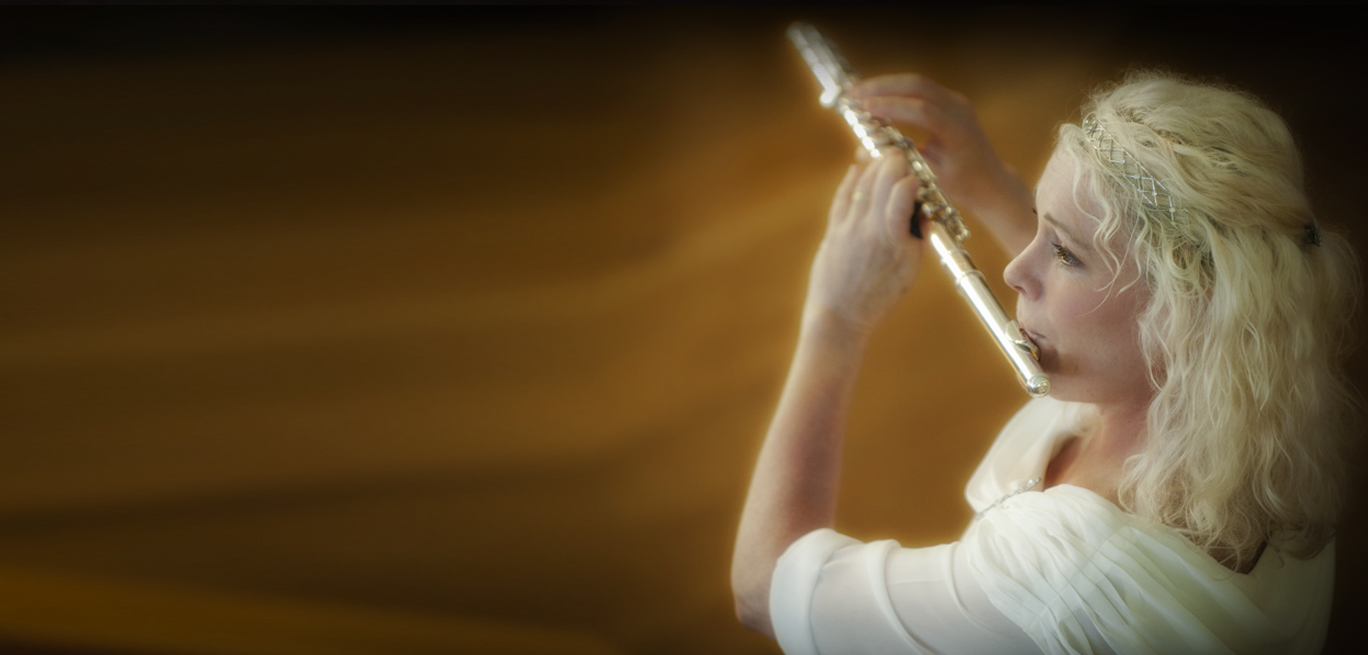There has been no other time period when it would have been possible for a flutist to follow one’s heart musically, let alone lead a band. This has been the case in previous eras for various reasons: if you wanted to be a flutist, it was a mere fact that you would be a classical flutist, since that was the only music available to school yourself in, to dine upon. I, too, had planned on following this path, but that divine hand called Life evolved a road less traveled for me to walk upon. In addition, in past eras the only opportunity an aspiring musician had to hear other music or musicians was in their own cities, towns, or villages. The world was “smaller” in all previous eras, and it followed that the available opportunities matched this.
The evolution of technology has changed everything: from travel, to recordings, to flute design. We now have the privilege to visit other cultures different from our own, hear other instruments and other musical expressions of this global primal instinct called music-making, and the craftsmanship and technology to create an instrument that suits today’s needs. It is within these privileges that I am devoting my learning, both musically and culturally.
Technology has also allowed the flute to be audible in a “band” situation via the microphone—an unprecedented boon for our time, where in the past the flute was that little bird in the back of the crowd chirping the good news, but only the more brassy or multiplied voices were heard over the waves of sound. In fact, our beloved sacred tradition of “chant” evolved due to the fact that the congregation could hear a singing voice more audibly than the spoken word, and so chant began—-out of a weakness, as it were, into a great beauty and strength into its own rite.
Compare this to the flute in the example of the most so-called passionate era, the Romantic era: almost no meaty flute music exists because the flute did not garner the attention and respect from the best composers due to its seeming inability to express the depth of colorful emotions that a violin or a piano could. Technology again came to the fore through a German named Theobald Boehm, who re-designed the flute into what is now our modern/current flute. He changed the tube from wood to metal, and the shape of the bore from conical to cylindrical. Now it could project a louder sound, but like any instance where prejudices have been bred, time must once again re-define the respect, and so the Romantic era came and went.
I like thinking of the former flute as if it were considered a weak individual, one that gets pushed around somewhat, called upon to serve others but never allowed to speak up for itself except to the chosen few who understood it’s individual beauty, and chose to think of its “weakness” as a kind of humility. Now, it is an individual that has become radiantly strong, well-spoken and outspoken, whose identifying characteristic is called Beauty. People love quoting Mozart in saying that he did not like the flute, and my reply is that he never heard our modern one. I believe he would have fallen in love with it. And I believe that flute players in general are some of the most interesting and animated, life-filled group of individuals that I have come across—who knows why? So much air flowing through us, like a spirit? To be fair, each section of instrumentalists probably also think their child is the most beautiful…
Musically, our society has evolved to such a degree that we are permitted to make the music that moves our hearts the most. Freedom of music improvisation and ad libitum (change as to one’s liking) was traded for the composers exact notes from the mid-19th century onwards, but is finding its way back in our era-and I do not mean specifically “jazz”, but performer-as-composer/arranger. This is not unique to the flute, but is happening with all instruments today.
Now that decades have presented us with recordings of various kinds, we have the benefit of exposure to global diversity, and it has bred yet another kind of music-making based upon the absorption of these revelations. Diversity and expansion have been a hunger of mine for many years. It was probably hastened due to the fact that I had devoured the classical flute repertoire at a relatively young age, and came out wanting more music to expand my soul and offer to my audiences. Hence, these recordings from around the world, musicians of every instrument and ilk, and other artists of the highest quality have escalated and evolved our society’s level of artistic excellence due to this luxury of education, comparison and growth. Combine this with the personal desire for “free expression”, and you have new music. I live in this said era. And what’s even more amazing? I am a female, permitted as no era before me to partake in this Artist’s Life. It is one of watching and listening, taking in, digesting, and giving back out, re-configured from my own soul, through my own art form of flute music and performance. This is the era of the flute, in which I gratefully stand.


